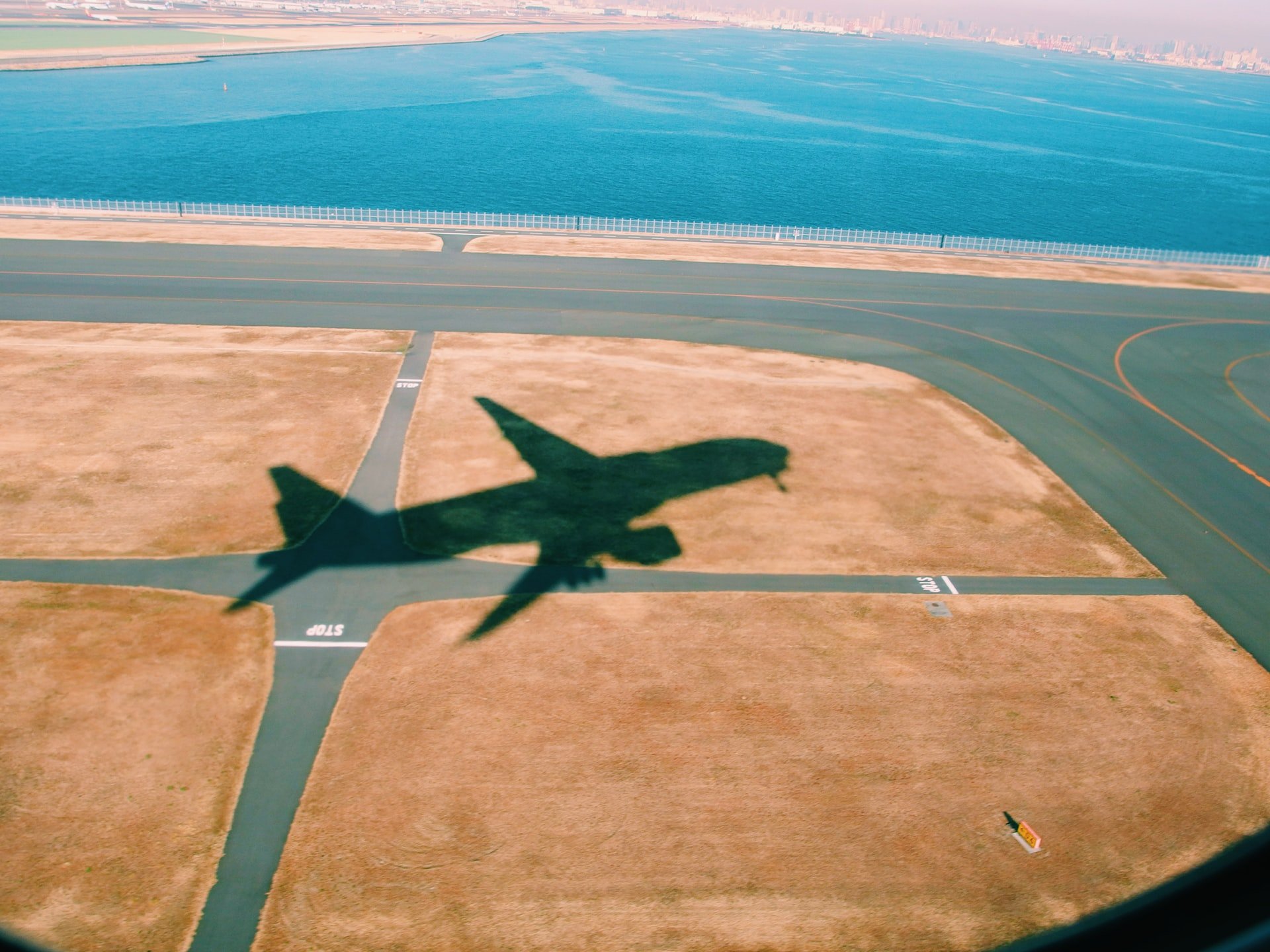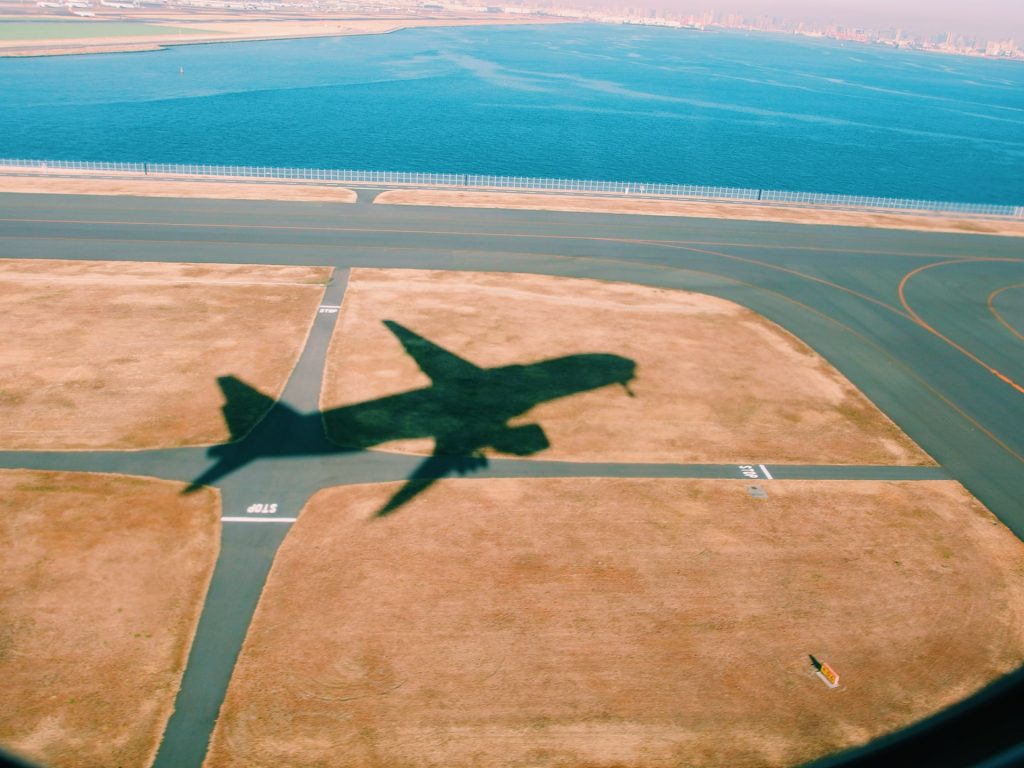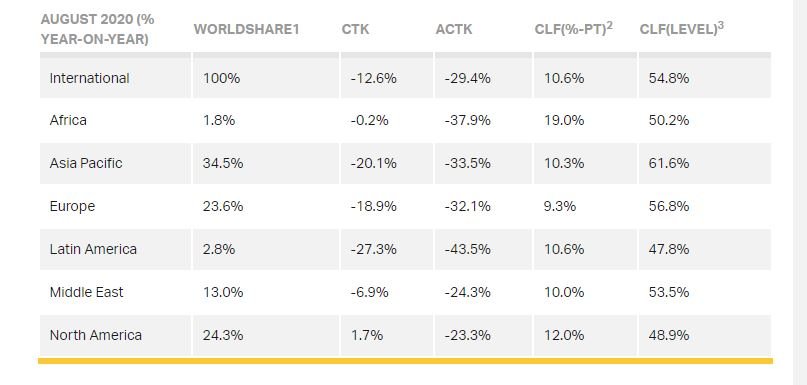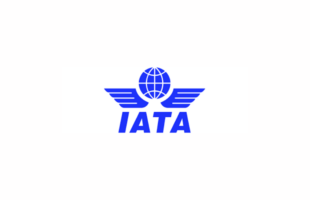
(Photo by Yu Kato on Unsplash)

Global air freight markets showed slow improvement amidst insufficient capacity, data from the International Air Transport Association (IATA) revealed. Asia Pacific airlines, in particular, saw air cargo demand fall 18.3 percent in August compared to the same period a year earlier, with capacity down 35 percent in the region.
On a month-on-month basis, IATA said global demand moved slightly in a positive direction but at a slower pace than some of the traditional leading indicators would suggest. Capacity constraints continue with most passenger aircraft parked.
With peak season coming soon, the severity of the capacity crunch may lead shippers to turn to ocean and rail, IATA said.
“Air cargo demand improved by 1.8 percentage points in August compared to July. That’s still down 12.6 percent on previous year levels and well below the 5.1 percent improvement in the manufacturing PMI. Improvement is being stalled by capacity constraints as large parts of the passenger fleet, which normally carries 50 percent of all cargo, remain grounded. The peak season for air cargo will start in the coming weeks, but with severe capacity constraints shippers may look to alternatives such as ocean and rail to keep the global economy moving,” said Alexandre de Juniac, IATA’s director general and CEO.

August data
- Global demand slid 12.6 percent below last year’s levels in August (-14 percent for international)—a modest improvement from July’s 14.4 percent year-on-year drop. Meanwhile, seasonally-adjusted demand inched up 1.1 percent month-on-month in August.
- Global capacity shrank 29.4 percent in August (‑31.6 percent for international) compared to the previous year—somewhat unchanged from the 31.8% year-on-year drop in July.
- Belly capacity for international air cargo was 67 percent below the levels of August 2019 with passenger services side–lined, whilst dedicated freighter capacity jumped 28.1 percent.
- Daily widebody freighter utilisation is close to 11 hours per day, the highest levels since these figures have been tracked in 2012.
- New export orders in August rose 5.1 percent year-on-year, according to the manufacturing PMI, whilst the PMI tracking global manufacturing output increased month-on-month and remained above the 50-mark, indicating growth.
Regional performance
Asia-Pacific airlines saw demand for international air cargo fall 18.3 percent in August compared to the same period a year earlier. After a robust initial recovery in May, month-on-month growth in seasonally-adjusted demand declined for the second consecutive month. International capacity is particularly constrained in the region, down 35 percent.
North American carriers reported a 4 percent drop compared to the previous year—the third consecutive month with a single-digit decline. This steady performance is due in part to strong domestic and transpacific demand on the Asia-North America route, reflecting e-commerce demand for products manufactured in Asia. International capacity decreased 28.2 percent.
European carriers reported a decrease in demand of 19.3 percent compared to the previous year. Improvements have been slight but consistent since April’s performance of –33 percent. Demand on most key trade lanes to and from the region remained weak. The large Europe–Asia market was down 18.6 percent year-on-year in August. International capacity decreased 33.5 percent.
Middle Eastern carriers reported a decline of 6.8 percent in year-on-year international cargo volume in August, a significant improvement from the 15.1 percent fall in July. Regional airlines have aggressively added capacity in the last few months with international capacity improving from a 42 percent fall at the trough in April, to a decline of 24.2 percent in August, making it the most resilient of all regions. Demand on trade routes to and from Asia and North America remained strong with demand down 3.3 percent and up 2.3 percent year-on-year.
Latin American carriers saw demand steady at -26.1 percent compared to the previous year, ending three consecutive months of deteriorating demand. Demand on trade routes between Latin America (particularly Central America) and North America have compensated for weakness on other routes. Capacity remains significantly constrained in the region with international capacity decreasing 38.5 percent in August, the largest fall of any region.
African airlines saw the only instance of year-on-year growth in August at 1 percent. This was the fourth consecutive month in which the region posted the strongest increase in international demand. Investment flows along the Africa-Asia route continue to drive the regional outcomes.







